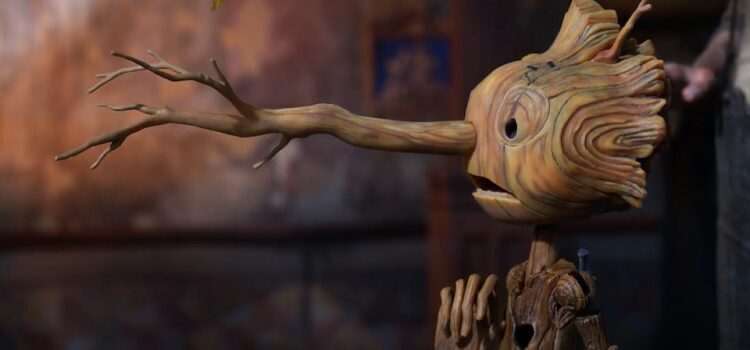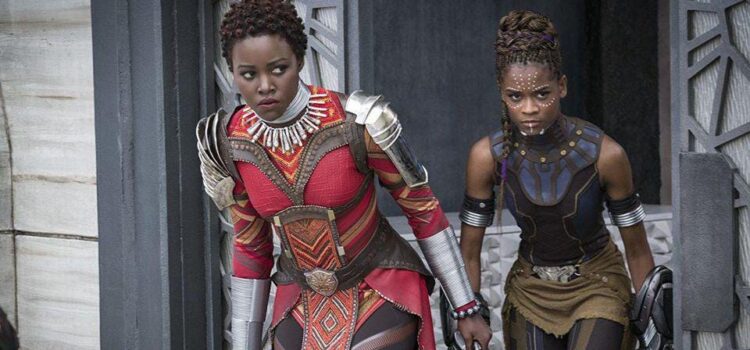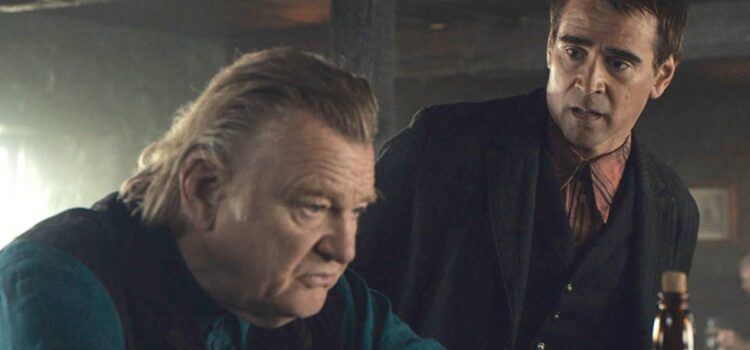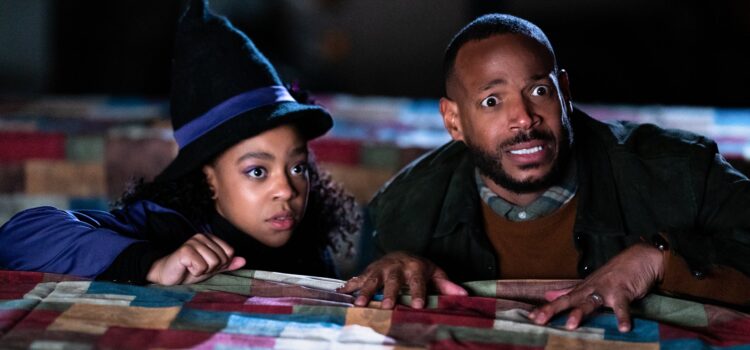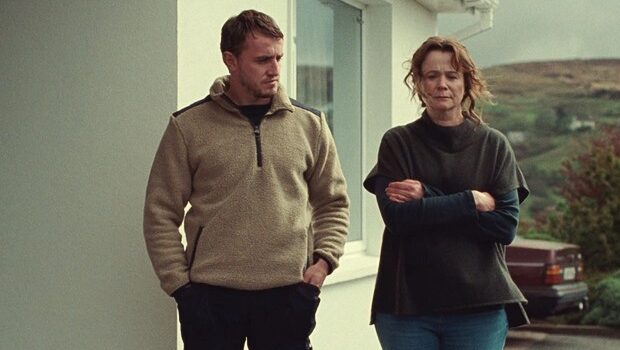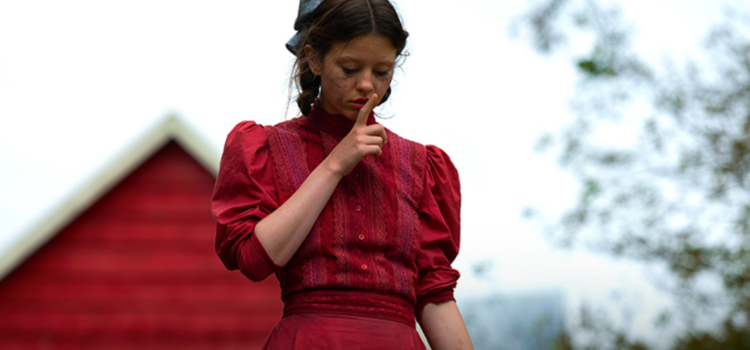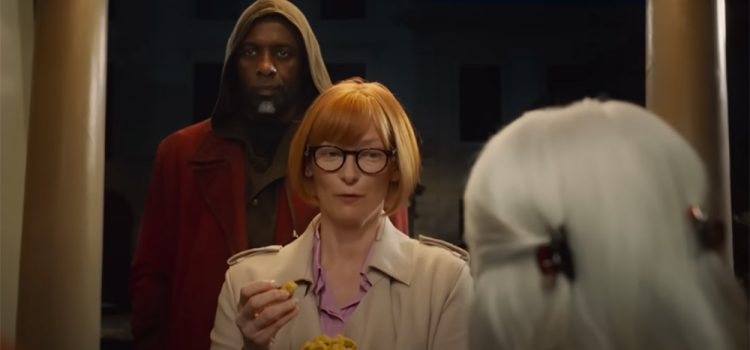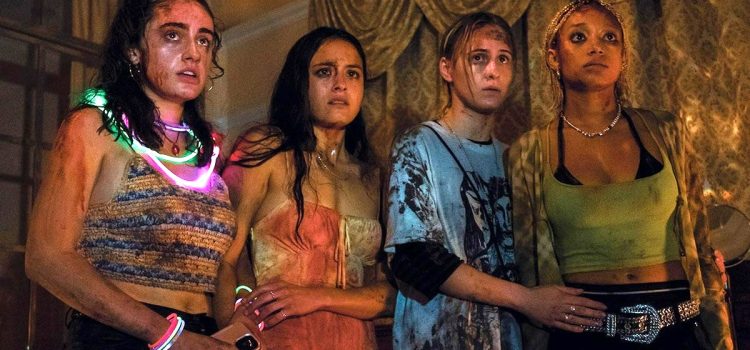By Alex McPherson
Visually spectacular and thematically rich, “Guillermo del Toro’s Pinocchio” is a feast for the senses, a rallying cry for rebellion, and a reminder to cherish those we hold dear.
Utilizing stop-motion animation and updating Carlo Collodi’s 1883 story to 1930s Italy — during a scourge of fascism, with the threat of violence ever-looming — the film zooms in on an elderly carpenter named Gepetto (voiced by David Bradley, with ample tenderness), who tragically loses his young son Carlo (Gregory Mann) in a bombing.
Drunk, furious, and at the end of his rope, Gepetto chops down the tree growing from Carlo’s tombstone — which turns out to be the home of the erudite, self-absorbed Sebastian J. Cricket (Ewan McGregor) — and crudely fashions together our titular Pinocchio (also voiced by Mann) as a stand-in for his lost child.
A vibrant, yet ominous Wood Sprite (Tilda Swinton, as cooly off-putting as always), with dozens of eyes peppering its wings, takes pity on Gepetto and brings his hurried creation to life, entrusting Sebastian to be Pinocchio’s moral guide. Suffice to say, Pinocchio’s first moments don’t go entirely smoothly. He careens across Gepetto’s cottage with gleeful abandon — destroying practically anything that gets in his way — as Gepetto watches, horrified, dodging incoming projectiles.
Pinocchio’s a lively, rambunctious, and curious soul, but Gepetto’s constant need to make him behave and fit certain roles — most notably, that of Carlo — only ends up backfiring. Townsfolk, most of whom are religious, immediately label Pinocchio as an Other to be ostracized. A fascist official named Podesta (a menacing Ron Perelman) takes a keen interest in Pinocchio’s peculiarities, as does the slimy owner of a traveling carnival, Count Volpe (Christoph Waltz), and his abused “assistant,” Spazzatura (Cate Blanchett, convincingly imitating a monkey).
What follows is a meditation on grief, freedom, childhood, and death that follows the general trajectory of Collodi’s vision and Disney’s 1940 iteration of the story, but with an extra helping of del Toro’s trademark empathy and political fervor.

Indeed, from a visual perspective alone, “Guillermo del Toro’s Pinocchio” is damn-near flawless. From the minute, tactile details poured into each and every character, it’s clear that the film is a labor of love from all involved.
Del Toro and co-director Mark Gustafson (the animation director of Wes Anderson’s brilliant “Fantastic Mr. Fox”) imbue these hand-sculpted figures with expressiveness (both grotesque and enchanting, often simultaneously) that — paired with the impeccable voice cast — beautifully suits this tale of love and compassion amid suffering.
The occasional rough edges only strengthen the characters’ authenticity, each molded from a world that’s beaten them down, in one way or another, in attempts to maintain control and “order.” Frank Passingham’s eye-popping cinematography takes full advantage of the freedom of animation to present numerous shots that won’t leave my mind anytime soon — particularly regarding the freakishly unnerving sea beast.
Pinocchio himself feels right at home in del Toro’s oeuvre — charming, naive, ignorant — thrust into an unfamiliar environment and told to obey. This pressure put on him by Gepetto to be someone he’s not is mirrored by Podesta’s son, Candlewick (Finn Wolfhard), who’s being forced to adopt a vile ideology forced on him by his father and by the larger authority.
Mann brings an expert level of innocence and confidence to the character, delivering both heartwarming and heart wrenching dialogue throughout. Pinocchio’s coming-of-age is as poignant as ever as he fights his way out of heinous situations — including exploitative work conditions, for entertainment and in service of a tyrannical government — to finally be seen as more than the irreplaceable Carlo in Gepetto’s eyes and to be loved for who he actually is. In this regard, Gepetto has just as much to learn about himself as Pinocchio does, and del Toro renders him a flawed, uncertain, yet deeply caring person, capable of growth even at his old age.
On the lighter side, McGregor is often hilarious as the stringent, wiseass cricket, shouldering most of the film’s laughs. Del Toro and Patrick McHale’s script crackles with sly, dark humor, paired with plenty of slapstick comedy at Sebastian’s expense, that never insults viewers’ intelligence. Waltz’s iconic line delivery perfectly suits Count Volpe’s capitalistic deviousness, and Blanchett is incredible without uttering a single line in English — her vocal mannerisms as the poor monkey Spazzatula convey multitudes.
Even though “Guillermo del Toro’s Pinocchio” follows a familiar template, there’s boatloads of creativity on display in terms of storytelling and aesthetic grandeur. Setting the tale during Mussolini’s reign gives Pinocchio’s acts of disobedience even more weight, and the emphasis on mortality (and the afterlife, given a morbidly idiosyncratic spin) adds wrinkles that caught me off-guard in the end, nearly bringing me to tears.
Additionally, it’s, for some reason, a musical, and while Alexandre Desplat’s score is typically sublime, the songs aren’t exactly necessary to keep the plot moving. That minor quibble aside, this is a film full of joy, sadness, danger, and understanding of life’s great challenges — one that will prove to be a timeless achievement.

“Guillermo del Toro’s Pinocchio” is a 2022 stop-motion animated musical fantasy film co-directed by Guillermo del Toro and Mark Gustafson and voice-work is done by David Bradley, Gregory Mann, Ewan McGregor, Ron Perelman, Christoph Waltz, Cate Blanchett, Tilda Swinton, John Turturro, Tim Blake Nelson and Finn Wolfhard. It is rated PG for dark thematic material, violence, peril, some rude humor and brief smoking and the run time is 1 hour, 57 minutes. It was released in select local theaters on Nov. 18 and will be streaming on Netflix Dec. 9. Alex’s Grade: A.
Alex McPherson is an unabashed pop culture nerd and a member of the St. Louis Film Critics Association.

